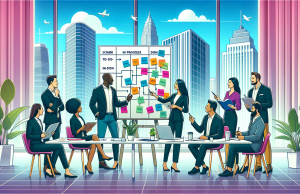In the city that never sleeps, the pace of industry and innovation is relentless. New York’s economy, a bustling hub for finance, technology, healthcare, and more, faces a critical challenge – a widening skill gap. This divide between the skills possessed by the current workforce and the competencies demanded by rapidly progressing technological landscapes presents a conundrum with serious implications for the city’s future prosperity.
The skill gap issue, a silent yet daunting barrier to growth, has been especially pronounced in sectors such as tech, finance, and advanced manufacturing. In these industries, the speed at which new technologies emerge can render a skill set obsolete in just a few years. Automation and artificial intelligence, for example, are no longer subjects of science fiction. In New York, they’re at the forefront of transformation – often outpacing workers’ ability to adapt or retrain.
This disparity has potential consequences that run deep. Companies may struggle to fill positions with qualified candidates, potentially stunting growth and innovation. Moreover, an inadequately trained workforce could lead to higher unemployment rates and a wider economic divide, undermining New York’s social fabric and its competitive edge on a global scale.
Addressing this challenge, local businesses are starting to invest more heavily in their workforce, offering on-the-job training and partnering with educational institutions to align curriculum with industry needs. Initiatives like the Tech Talent Pipeline are examples of the collaborative efforts to reskill and upskill New Yorkers, ensuring they’re not left behind as the job market evolves.
Yet, there’s more work to be done. To bridge the skill gap effectively, a multifaceted approach is required. This includes expanding apprenticeship programs, incentivizing lifelong learning, and promoting STEM education from an early age. Moreover, there’s a pressing need to ensure that these opportunities are accessible to all New Yorkers, regardless of their background, to support a truly inclusive economic growth.
Given the diverse demographic of The New York Times readership, it’s essential to emphasize that preparing New York’s workforce for the future is not just a local concern but a national imperative. The strategies we implement here could serve as a model for other cities grappling with similar issues.
The Work Times, akin to The New York Times of the work world, calls upon industry leaders, policymakers, educators, and workers themselves to unite in this endeavor. We must look ahead and act today to secure New York’s economic vitality and provide a beacon of hope for cities worldwide.
The conversation around the skill gap is more relevant than ever, and The Work Times is committed to shedding light on the solutions that will lead us into a more prosperous future. As we continue to explore this issue, we encourage our readers to engage with us, sharing their insights and experiences to enrich this crucial dialogue.




























